This will be one of the more delicate articles I have ever written due to its core subject, Soviet art in an ex-USSR town where a part of its population demands that art to be dismissed from the public sphere post haste, while another group in return does all that they can to make sure said remnants of the USSR remain in place, or are at least stored somewhere safe. My love for Kazakhstan and its people only makes things more complicated… However, it is a tale that must be shared, as Almaty, in many ways, remains a Soviet treasure trove to those with a keen eye, especially if you know where you need to go.
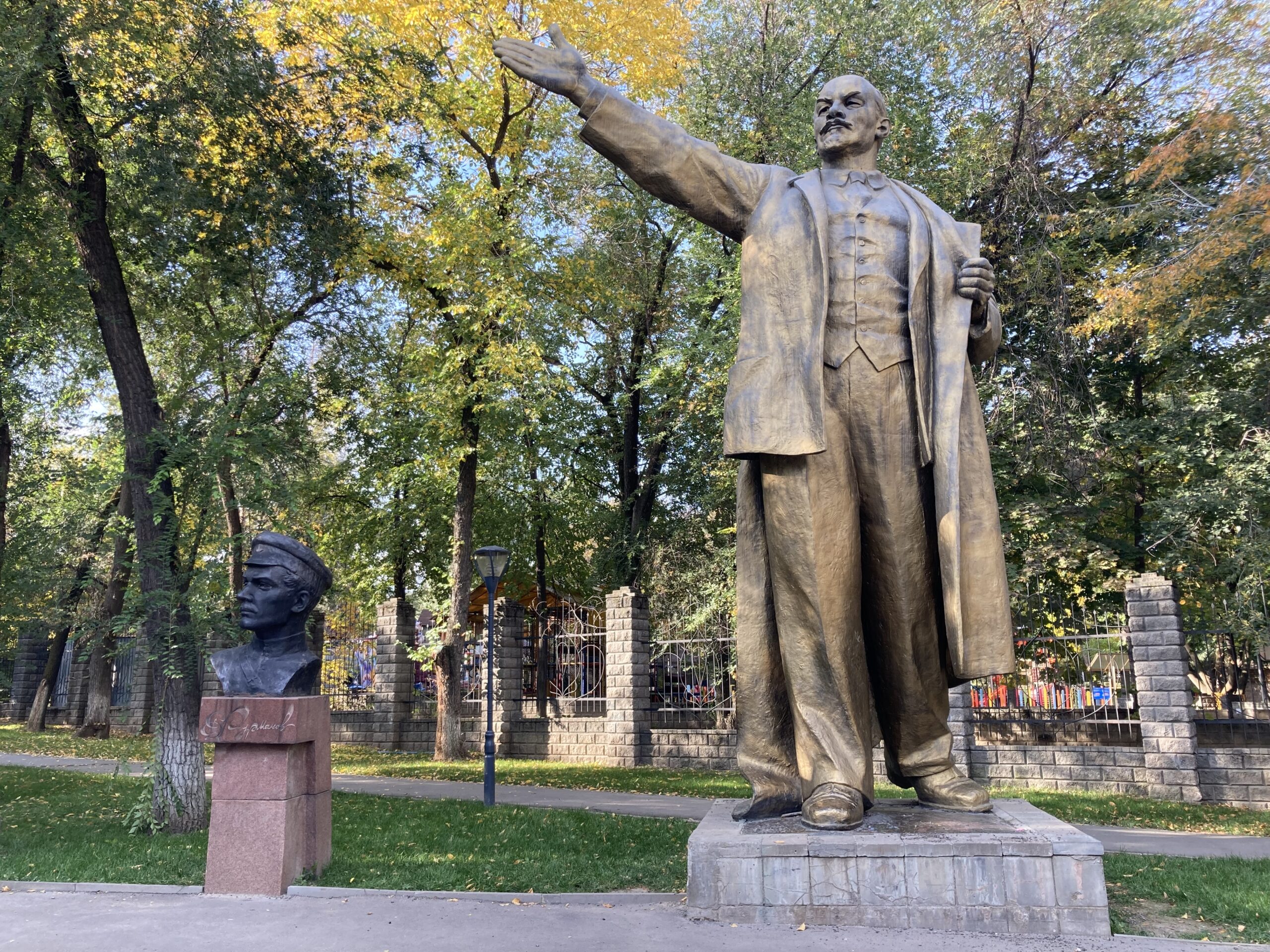
Almost ten kilometres away from the city centre of Almaty, one can find the Family Park, which is an unsuspecting little greenery amidst a rather aggressively concrete part of suburban Almaty. What is captivating about this place is not its pretty trees, but this massive statue of Lenin that is found just next to it. It is pretty much in perfect condition, and is surrounded by a few other statues and busts of Soviet elites on both of its sides. However, as you can probably tell, it is a bit out of place here. In fact, it is almost ten kilometres away from its original place.
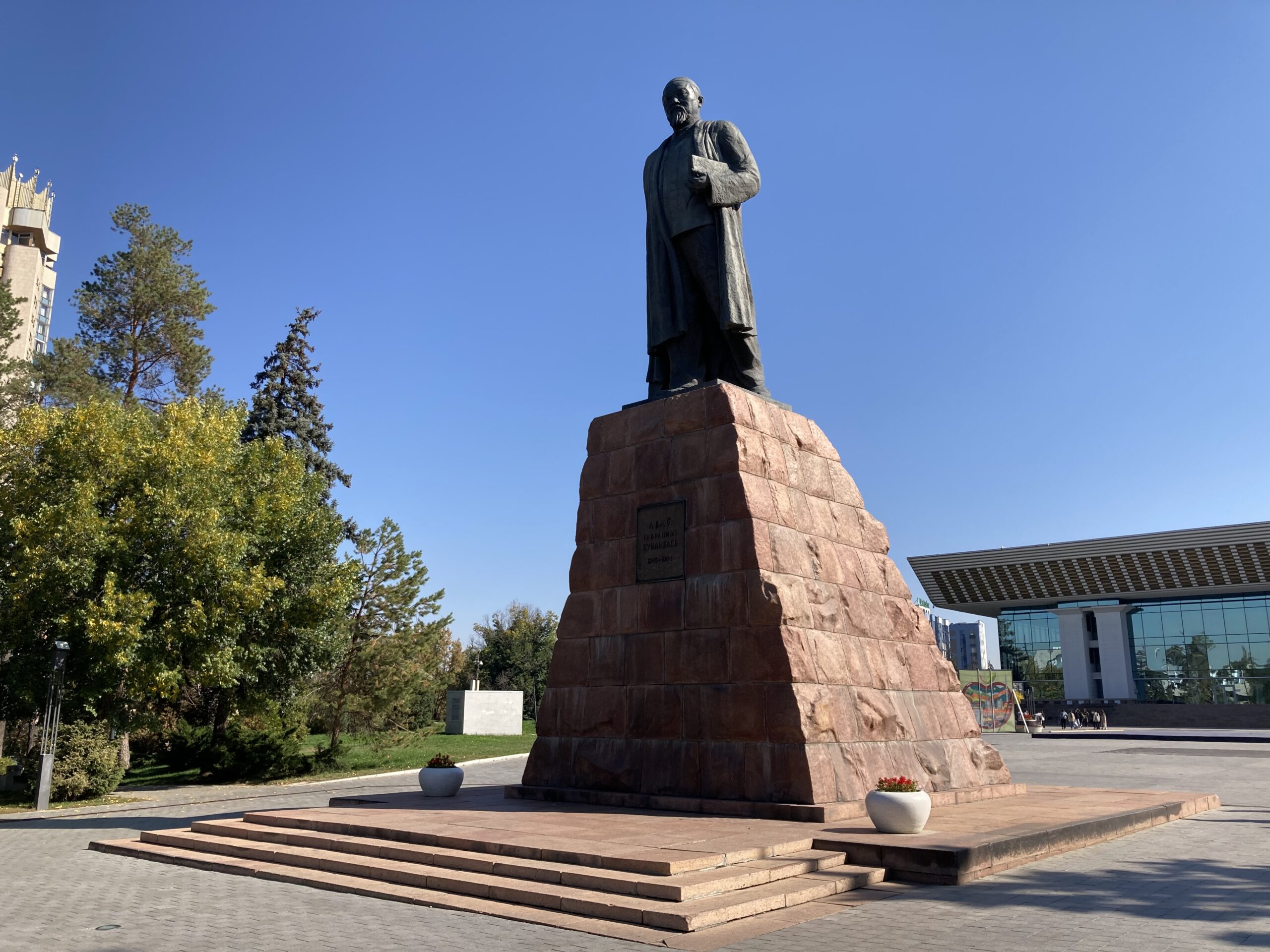
This is where the statue of Lenin once stood atop, in front of what is today the Republic Palace, which is pretty close to the famous Hotel Kazakhstan. Now, Abay, the national poet of the Kazakh people stands atop this mantle, which itself was not changed at all to my knowledge. This is not only understandable, but also quite the norm in this part of the globe. It is part of a greater effort to cut one’s ties to its own recent past and to create a new society, often by using an even older history as a foundation to build upon. It would be absurd, in fact, if Lenin was still found here. What is certainly surprising is that unlike in many other cases, Lenin survived the ordeal in this case, thanks to the efforts of some grassroots organizations that made sure that it was safely carried away to a more remote location, where it cannot bother many people, and certainly not the authorities.
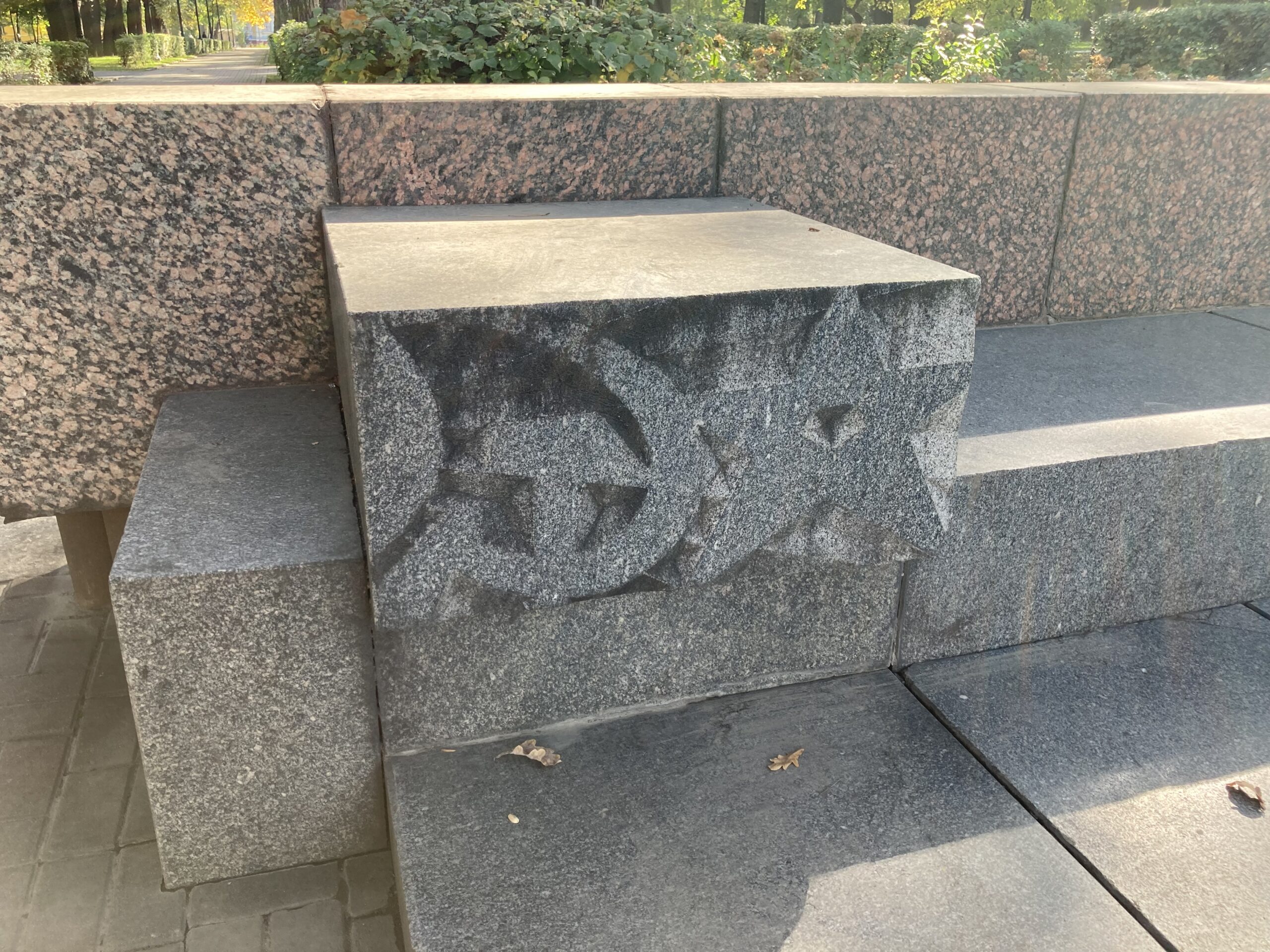
That is why the degree of destruction of the Almaty’s Soviet heritage, or that of Kazakhstan’s in general, is difficult to judge. Compared to the likes of Tbilisi and Batumi, this place is nothing short of a sanctuary dedicated to its Soviet past, an open air museum even. I mean, sure there are plenty of lost art in one way or another, and a lot of things seem to be left to their own devices but state-mandated destruction of many sculptures and mosaics seems to be limited, at least to a foreigner. This seems to have a lot to do with people that fight for the survival of these relics of the past, such as those that managed to save the Lenin statue that I started with from complete destruction by moving it far away from the eyes of authorities that wanted it gone, you will find out a bit more about these people by the end of this short article.
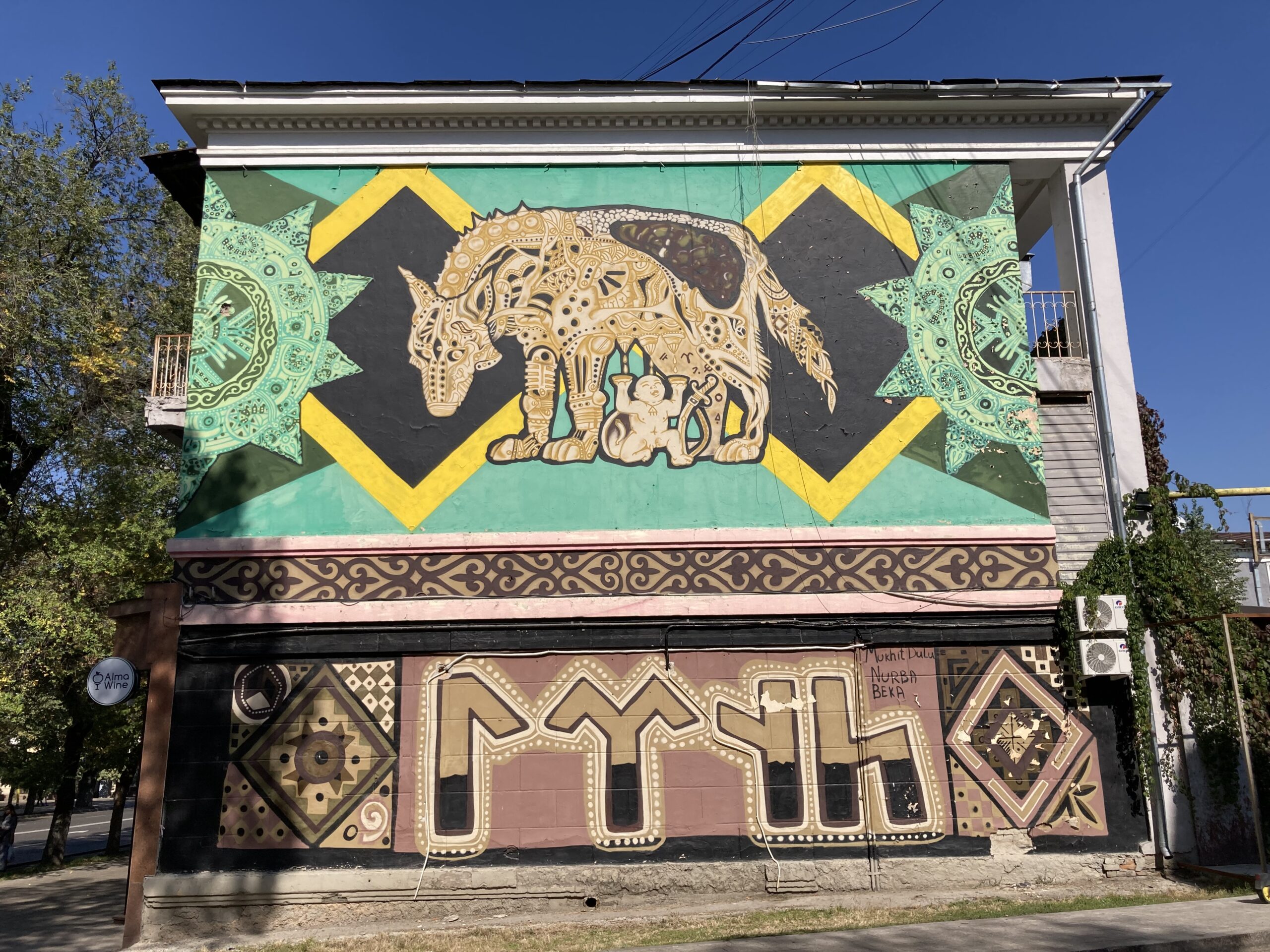
When talking about art in public space, there is also the issue of space to tackle. Most Soviet city planners had no issue filling all parts of their concrete jungles with some reliefs, paintings, or mosaics, which leaves very little room for future artists to show their own skills to the public. This combined with a newfound interest in the older histories of the region result in murals such as this, some of which may or may not have replaced some previous artistic endevours. The word “Turk” in Orkhon script can be seen here with what appears to be a mechanical wolf feeding a small baby, which is a reference to a central piece of Turkic mythology which involves Turks literally “coming from” wolves. This is an exceptionally popular imagery among the more zealously nationalistic people of Turkey as well.
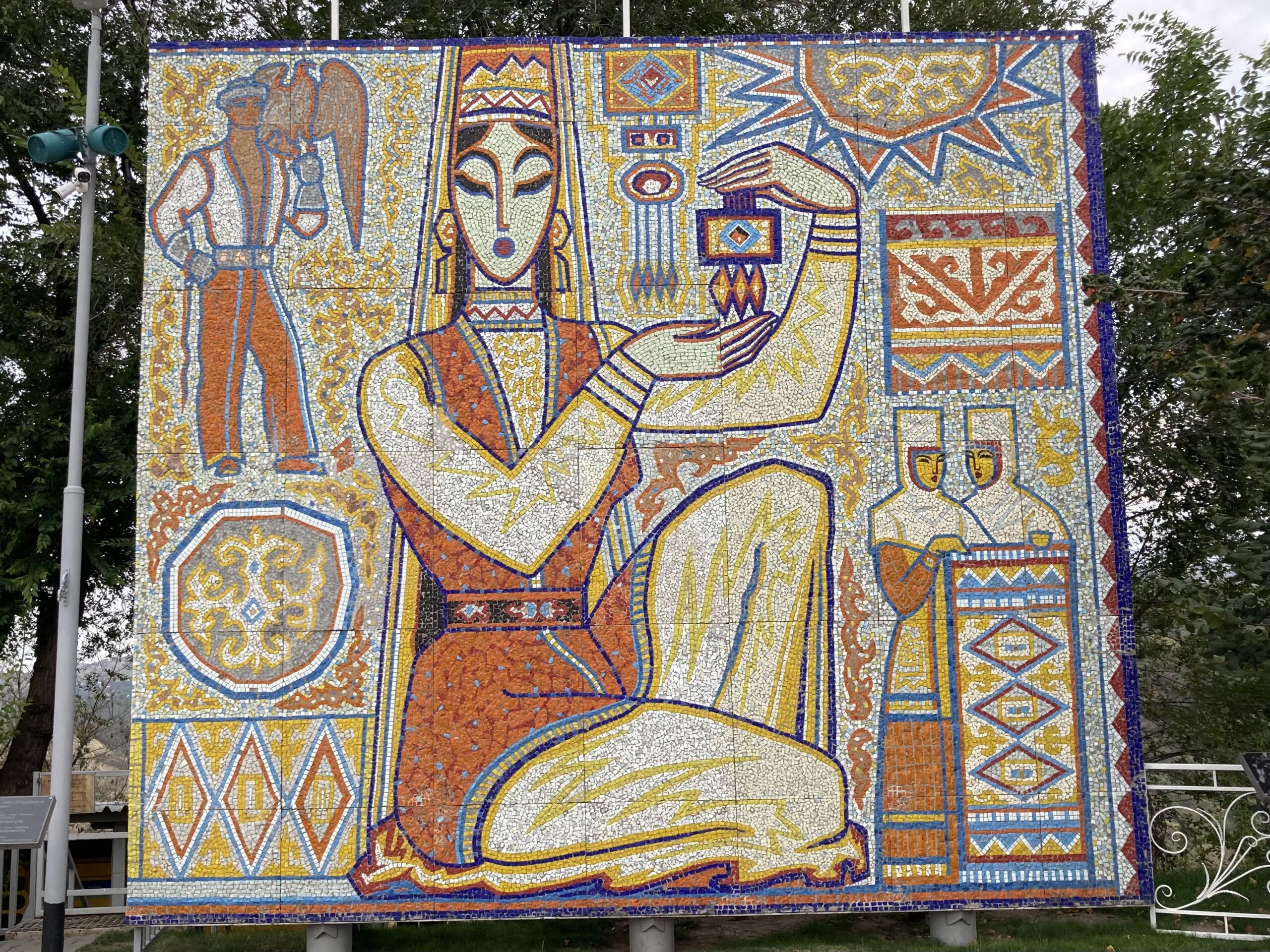
In any case, Almaty is still home to a decent number of mosaics and reliefs from Soviet times. In fact, some of the less political ones are even relocated to more touristic parts of town where they became more visible and accessible to masses, like this Kazakh girl that now resides atop Kok Tobe. And that is not all!
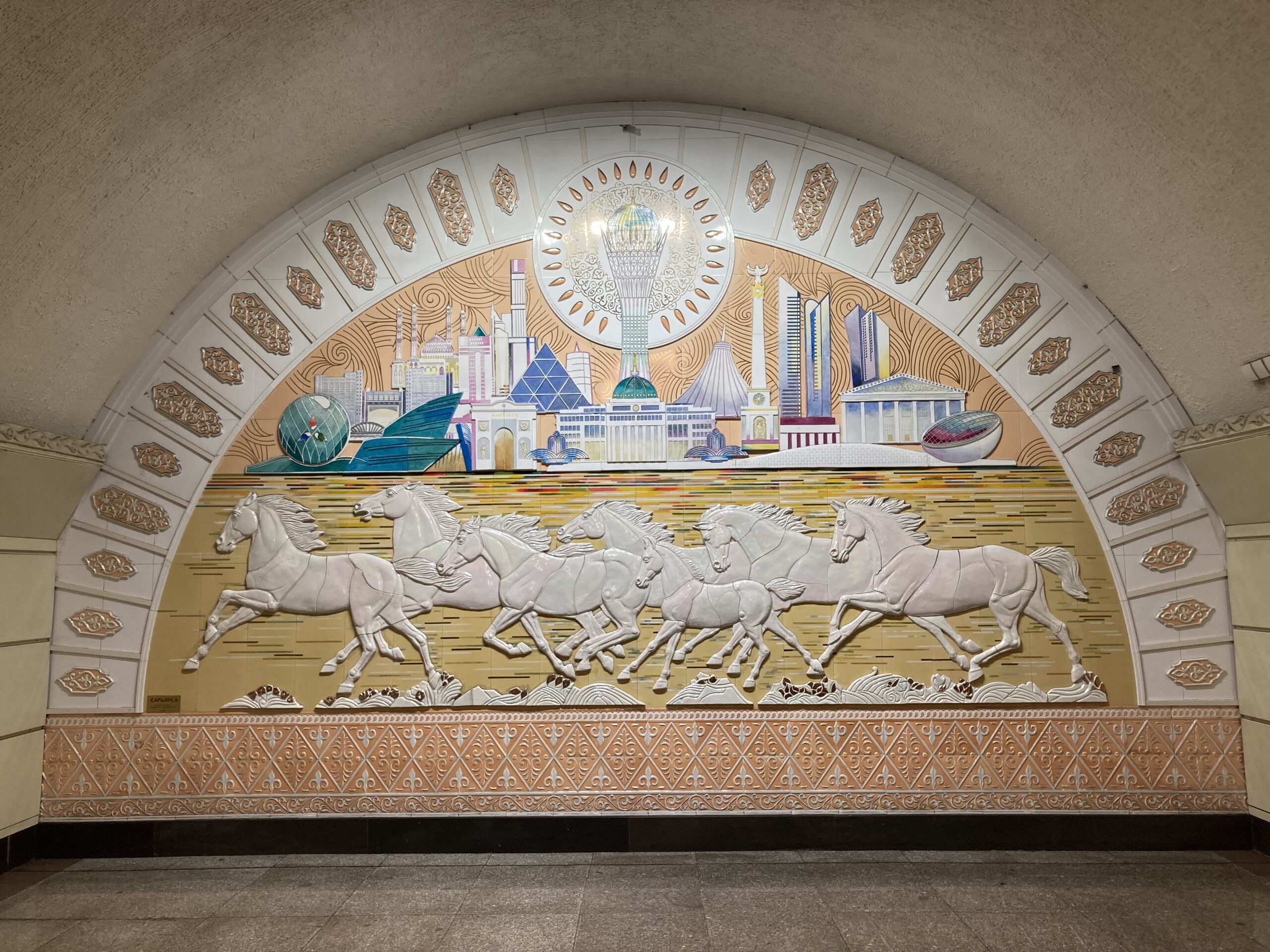
There also seems to be a renewed interest among some cadres of the people to repopulate the town with what one can refer to as street art, similar in spirit though not in theme or style to the ones that their elders grew up with. This resulted in a lot of decent murals and reliefs to appear all around Almaty, especially in its new metro stations. This artistic piece with a look at modern Astana is an excellent example of that. I did not feel homesick or anything at that moment, as I was enjoying Almaty a bit too much, but it did remind of some decent things I took for granted about Astana (like its much cleaner air) as I was already living there for a while.
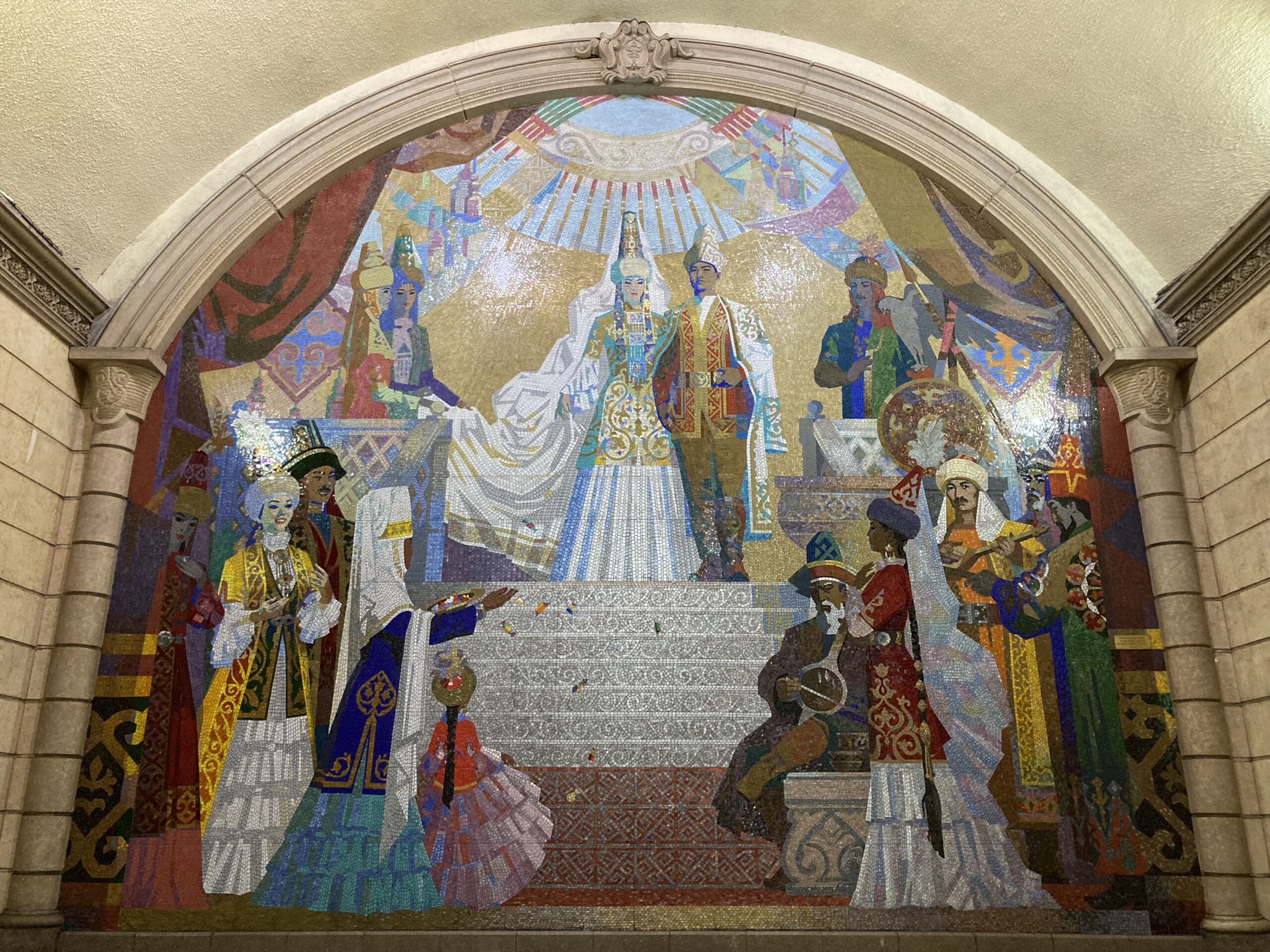
To be honest with you all, despite some travelers’ unending praise, Soviet or modern art that one can find in Almaty’s metro left a lot to be desired, compared to what I could enjoy by simply walking outside. By dedicating one whole morning, I stopped to check almost every single station, and yet I encountered only a few decent artistic displays. Perhaps reading some of those other travelogues set my expectations too high. Nevertheless, I did come across one mosaic that made me realize that all of this effort was worth it. This intricate Soviet mosaic of a Kazakh couple getting married was beyond my wildest expectations, given how vividly colored and small its tiles were. You too can glare at it and be amazed for minutes as you wait for the next train in the gorgeous Auezov station. Also, some older reports of police officers heckling you for taking photos are now completely untrue. In fact, in this specific instance, the young police officer guarding the station showed me the best spot to stand in so that I can photograph the mosaic as a whole and without it reflecting too much of the light that is directed on it.
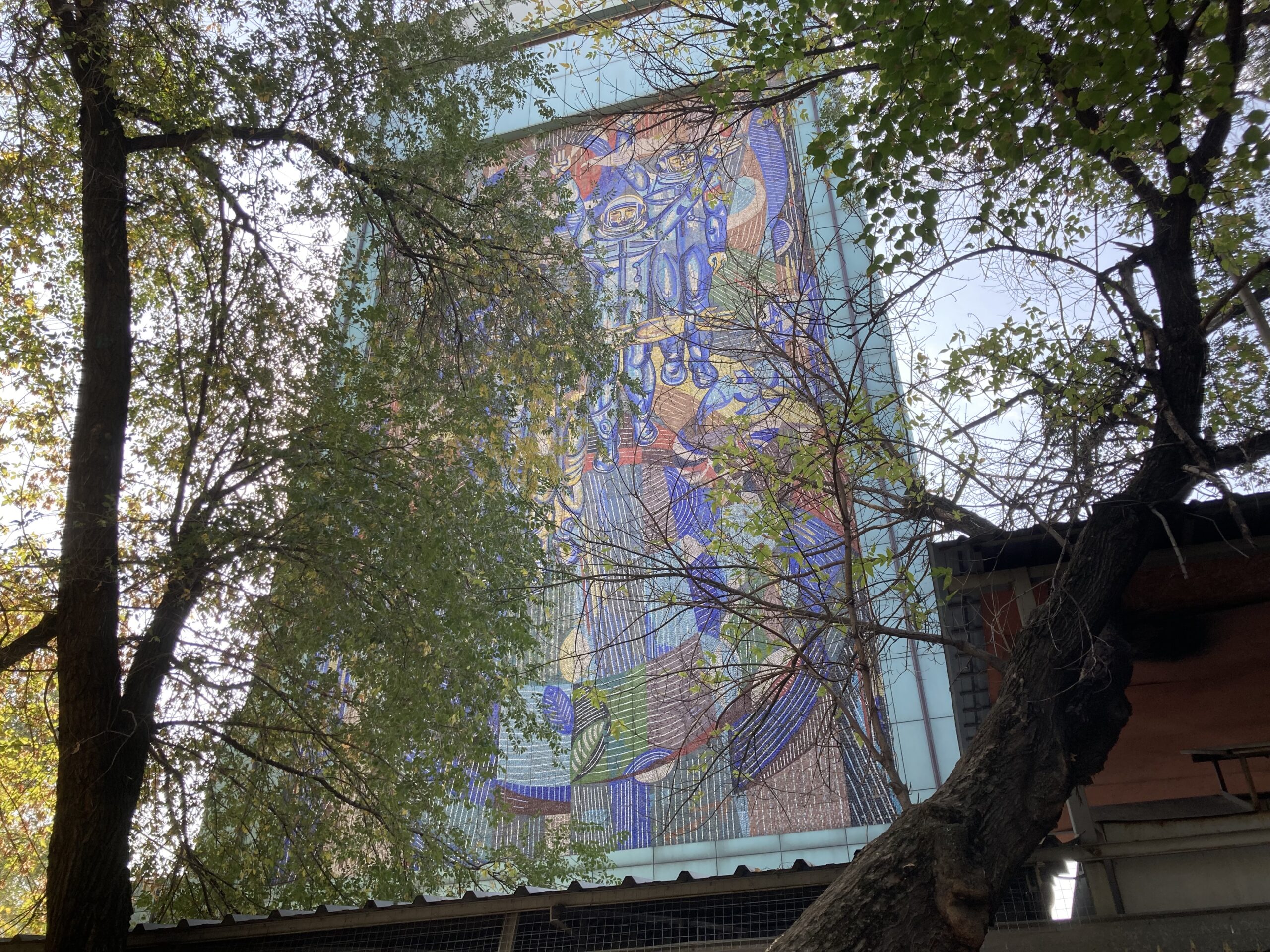
If you have claustrophobia or do not feel like riding the metro just to see some mosaics as I did, then you are in luck! There are many decent mosaics left all around Almaty, but it is pretty difficult to get a good photo of some of them due to the way they are placed, and due to the (otherwise) much welcome tree density in this town. These astronauts were just an amazing sight in person, but it is nigh impossible to portray what I saw here. With that being said, if you check out Google Maps or some websites (like the one you will find at the end of this article) that share photos of these mosaics, you can often find their photos with better angles, likely due to a use of drones, which certainly would have made my life much easier in this case…
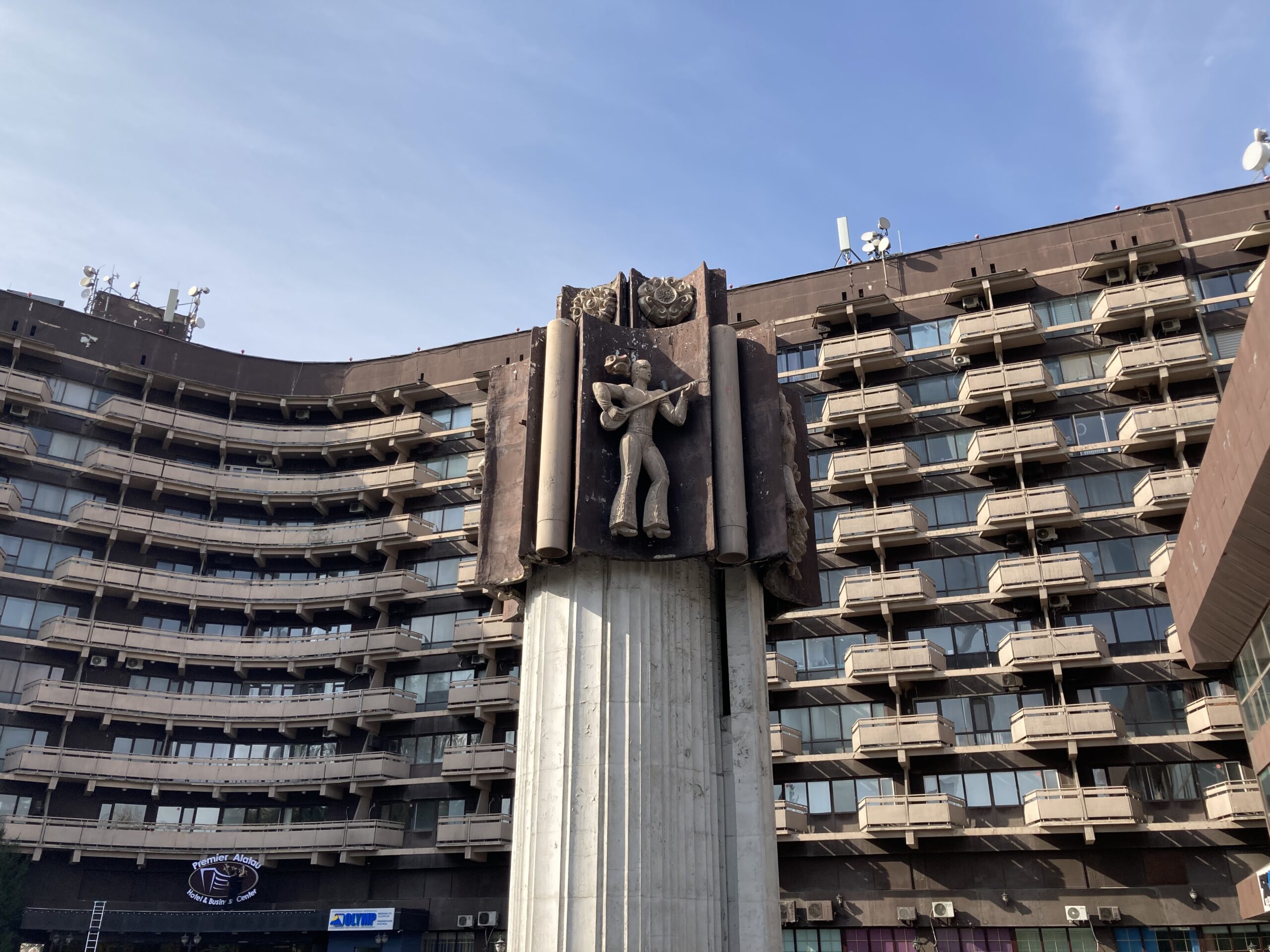
In any case, mosaics are not the only type of Soviet art that survived to this date. Other than all sorts of brutalist buildings that one can see around town, you can also find a few different types of reliefs and sculptures as well. This pillar with sculptures of traditional musicians on it seemed like an exceptionally interesting one as it was a beautiful amalgamation of Kazakh culture and Soviet artistic expression but given how I have no information on its origins, I would rather not presume too much about it beyond this point.
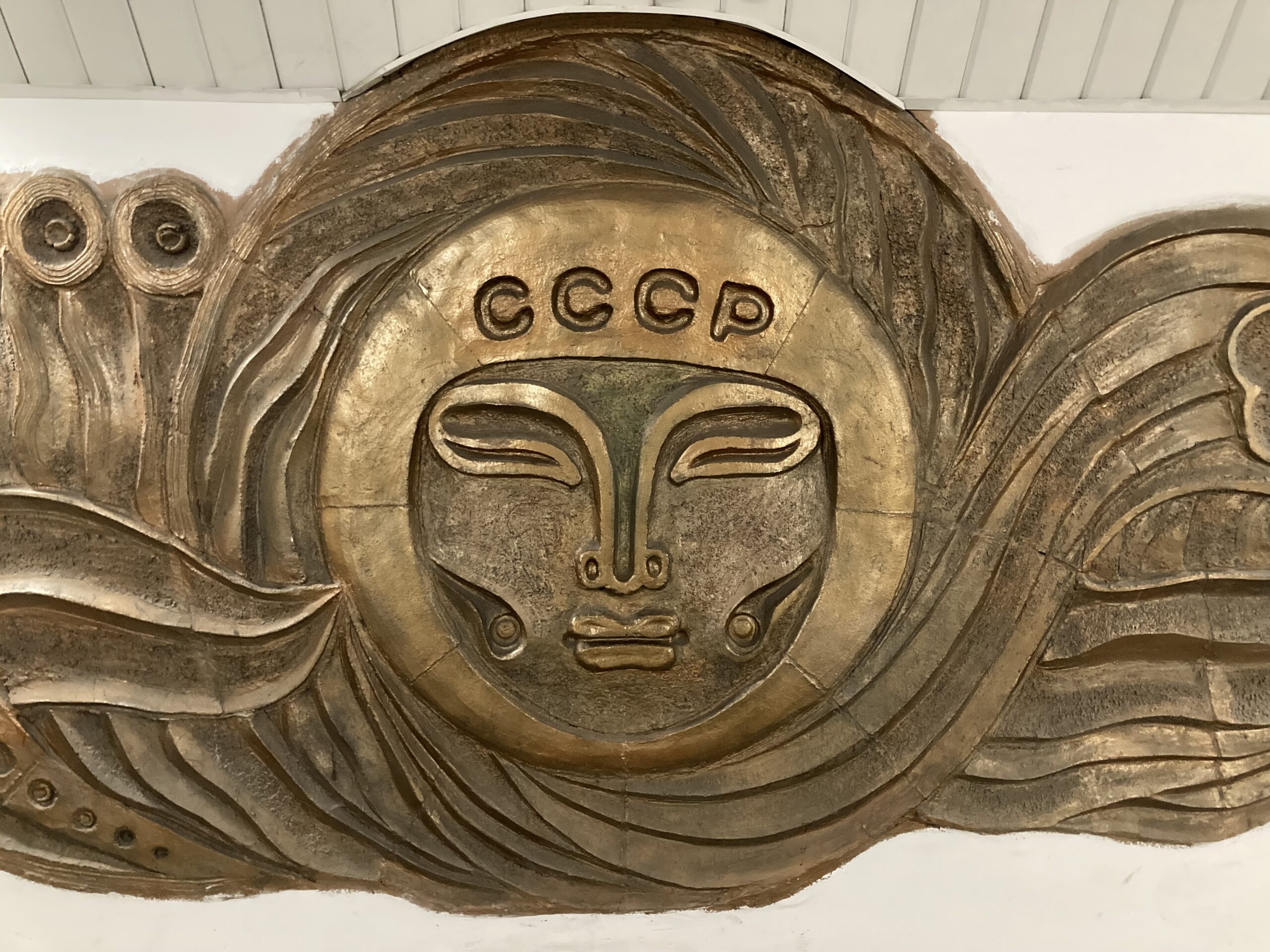
Just a few meters after the pillar above one can find an underground passage which just happens to be the home to this brilliant Soviet treasure. Once again, there was a huge legal battle to help save this relief when the municipality decided to make all underground passages of Almaty somewhat uniform, and surprisingly the protestors managed to keep it not only in one piece, but even in its original place! It is literally underground, and it is difficult to find for those that are not staying in this part of the town (next to the Premier Alatau Hotel for your information), so in essence, it really cannot hurt anyone… Which must have made the legal battle a bit easier than some of the other Soviet imagery elsewhere.
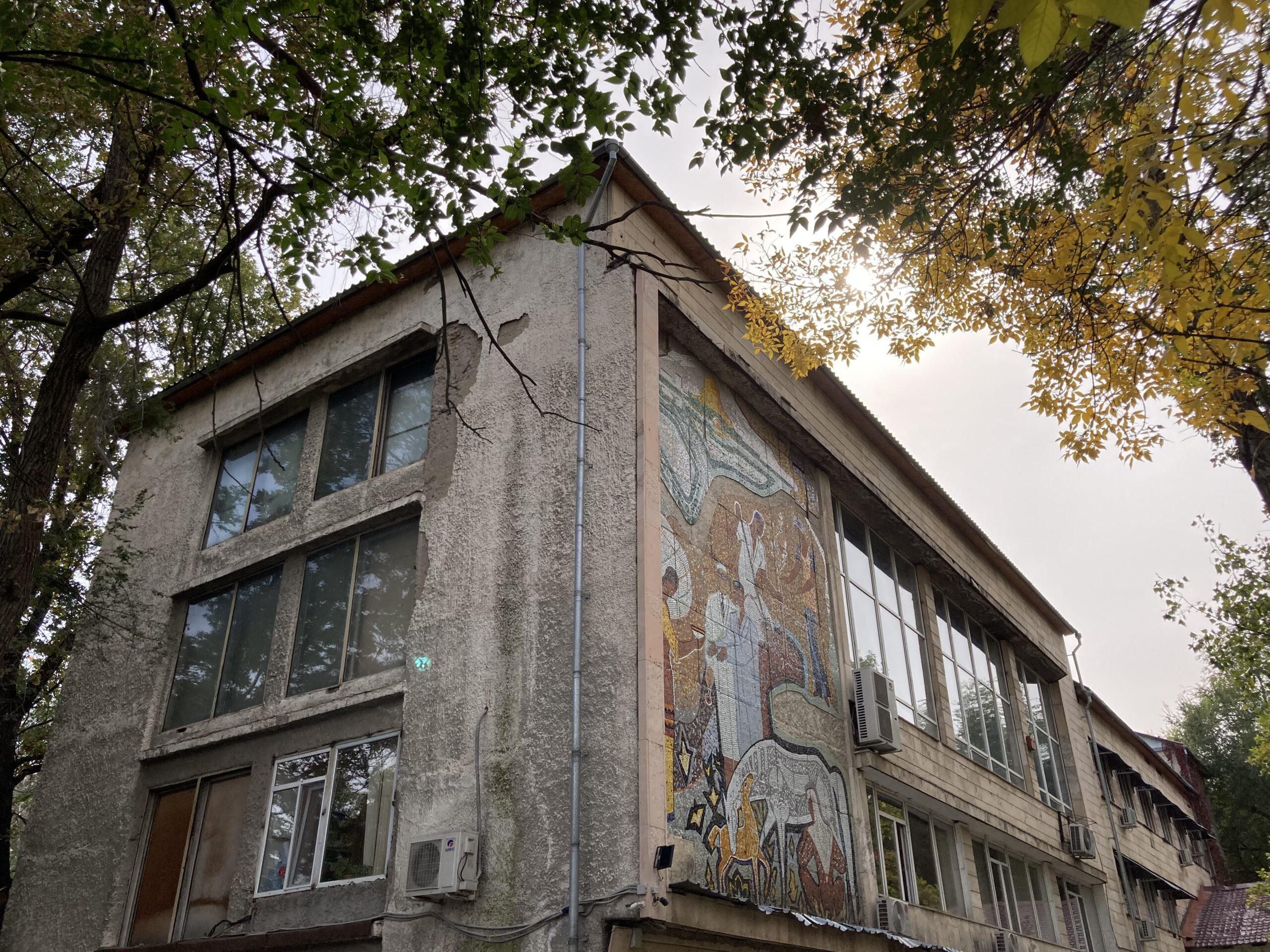
One can also find this wonderful creation on the side of a building in the National Center of Tuberculosis. It was hard to get a good shot of it because I was not sure if I would be allowed into the premises just to take a photo of this beauty. I opted to just jump up and down near the wall that surrounded the area and just hoped that I was touching the button at the right time to catch the best look of it. I feel like I did an okay job. In doing so, I also put a smile on a few grandpas faces as they saw a weirdo who jumped up and down to look at some old building that they must have been extremely bored of after all these years…
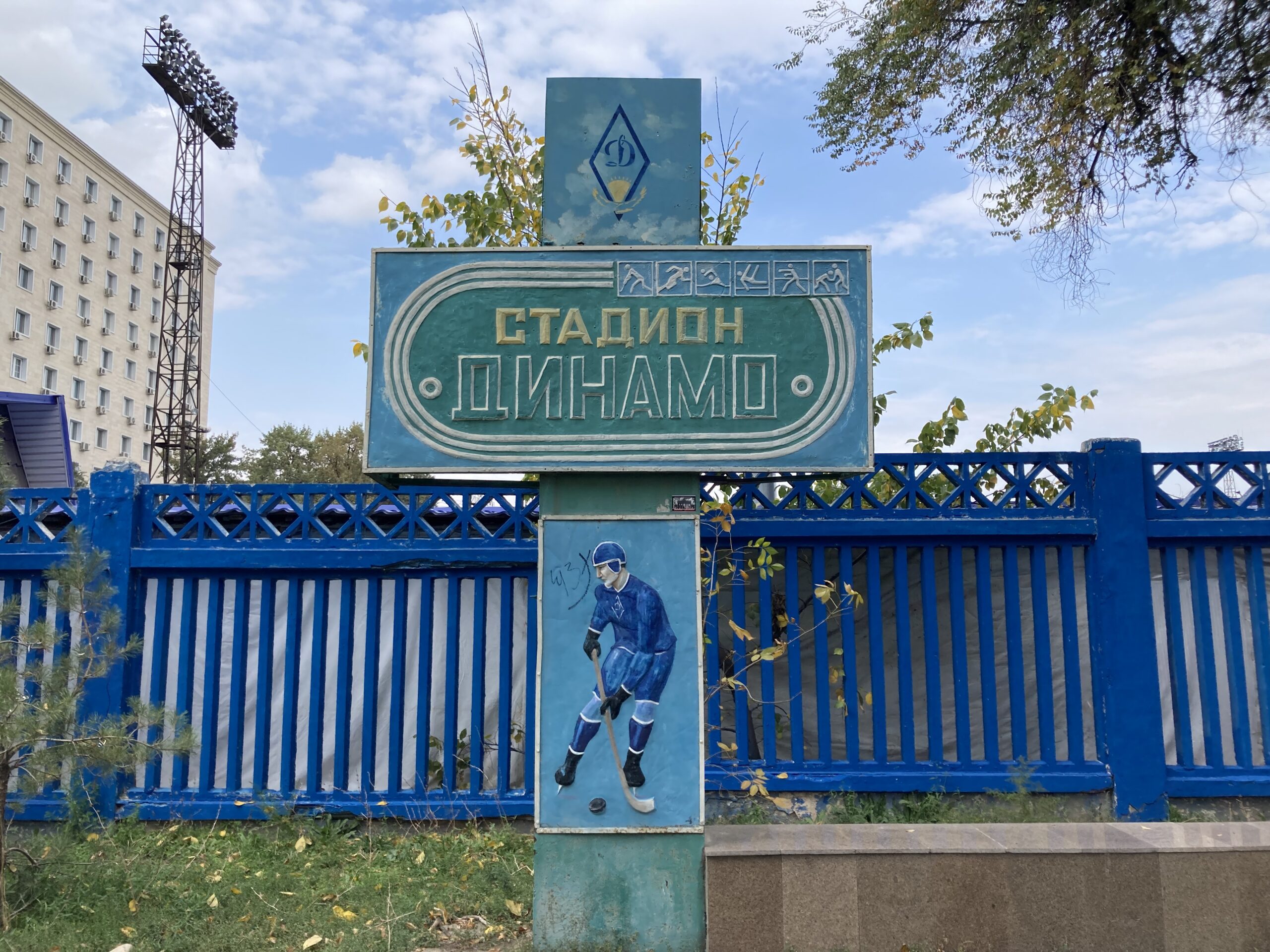
Each and every piece of Soviet art that remains in Almaty has a tale to tell, though I may not be the best person to share these tales with you. There are also a lot of them which means that I could only scratch the surface with this short article. For example, even just next to my Airbnb I was happy to stumble upon this little gem. Thankfully, there are a few projects dedicated to protecting the remaining Soviet heritage of Almaty, some even keep track of what was lost to make sure that they are at least not forgotten. The finest website I found on the issue so far is Monumental Almaty and I highly suggest all of you to take a look at it regardless of whether you will visit the city or not. If you enjoy my content even a bit, I am quite certain that you will love what they have over there. You will also find a map of these (and many more) Soviet art pieces that are spread all around Almaty, so it is an exceptionally useful website for avid urban explorers to say the least.
